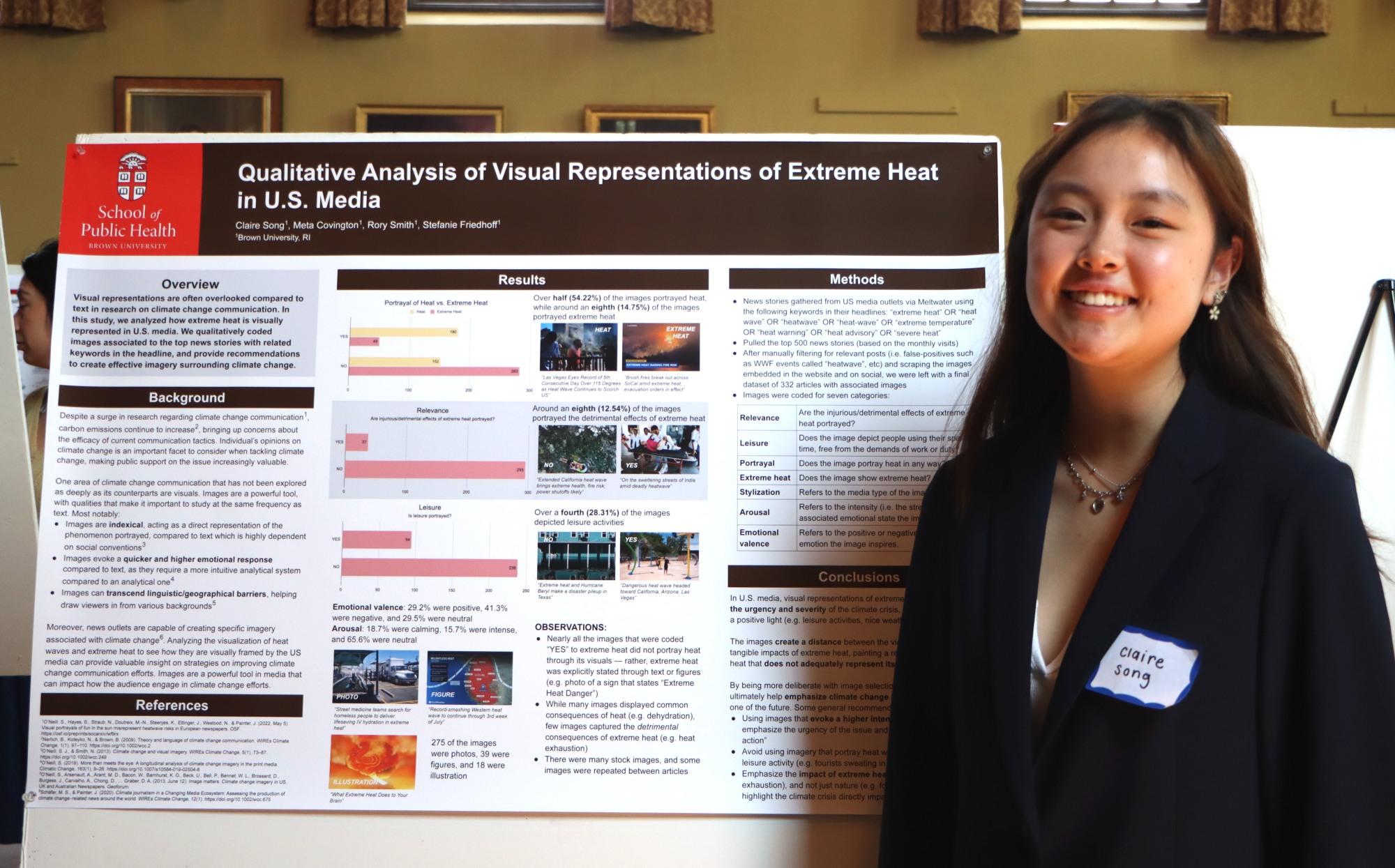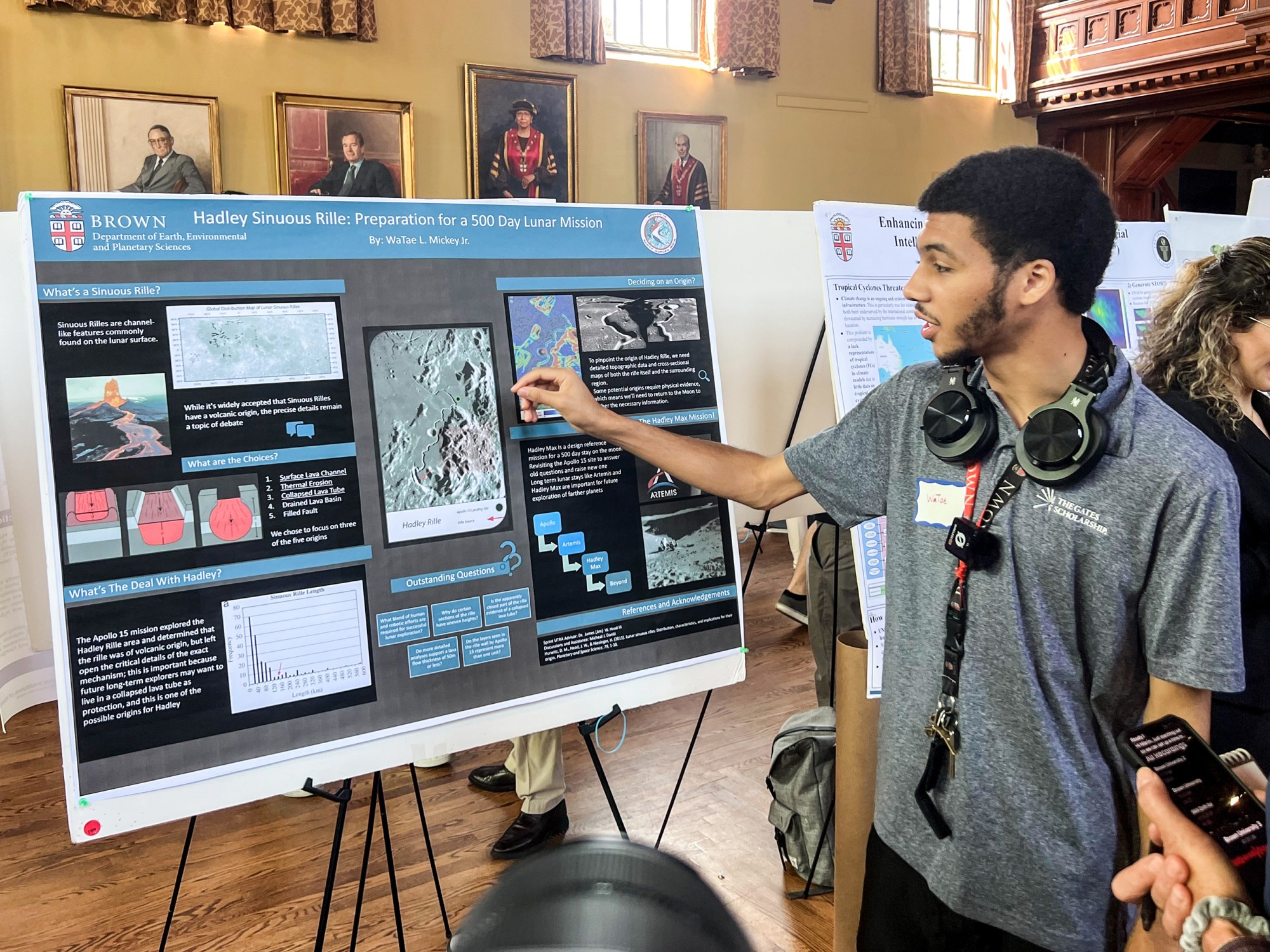Immersive Research
Brown offers transformational opportunities for students to conduct summer research with faculty colleagues and present results at the Summer Research Symposium.
Story by Sherri Miles
Video and photos by Brenda Subilhaga ’25
Immersive Research
Brown offers transformational opportunities for students to conduct summer research with faculty colleagues and present results at the Summer Research Symposium.
Story by Sherri Miles
Video and photos by Brenda Subilhaga ’25
The story of a summer research project at Brown often begins with a project idea, the desire to advance a professor’s area of research, or a burning question. Ten weeks later, methods have been followed, data collected, and results documented. With discoveries at their fingertips, student researchers are eager to share their stories at Brown’s Summer Research Symposium, held annually in August.
This year, nearly 300 undergraduate students from over 70 national and international higher education institutions stood with their research posters in Sayles Hall from August 1-2, presenting their summer research projects to faculty, peers, and visitors standing ten-deep at times to hear studies that vary from the essential role of midwives throughout history, sleep deprivation in working environments, the moon in 3, dark matter in the northern sky, and hundreds more.
Presenters included students from Brown and other institutions, all engaged in summer research under the guidance of a Brown faculty advisor. They had engaged in research through programs like UTRA—Undergraduate Teaching and Research Awards—applying for opportunities with specific professors or projects ranging from science and technology to humanities and social sciences.

“My project was about the visual representations of extreme heat in U.S. media,” said Brown student Claire Song ’27, who worked with faculty mentor Stefanie Friedhoff, professor of the practice at Brown’s School of Public Health and co-director of the Information Futures Lab. They took the top 500 news stories with keywords such as ‘extreme heat’ and ‘heat waves’ and analyzed images selected by the media to illustrate each story, finding that only an eighth of the images portrayed the detrimental effects of heat. Song referenced an example on her poster. “You can see here the title of this article is “Extended California Heat Wave Brings Extreme Health Virus,” yet the photo is of two people relaxing down a river,” she said. “So it's a very stark difference between what they're trying to convey in the article versus what the image is actually portraying. We concluded that the visual representations of extreme heat lack the urgency and severity of the crisis right now.”
“I studied the origin of the Hadley Rille in preparation for a 500-day lunar mission,” said Brown student WaTae Mickey Jr. ’26, whose ultimate goal is to plan missions to space. The Hadley Rille, a continuous channel on the lunar surface believed to be of volcanic origin, holds the possibility of supporting an outpost or long-term habitat. His faculty mentor Jim Head, a professor of geological sciences at Brown and co-investigator for the NASA MESSENGER mission to Mercury and the Lunar Reconnaissance Orbiter, let him choose his summer research project. “Once I got into the professor’s research group, there were a few things I could have researched, but one thing he was really interested in was the rille. And so I asked if I could give it a shot. He said, ‘Go ahead, I would love for you to start studying it.’ And so I started looking into it with him and I found it to be a head scratcher, and not only that, so connected to further exploration on other planets.”

“We stand here today with discoveries that contribute to the ever expanding body of knowledge,” said Oludurotimi Adetunji, associate dean of the College for Undergraduate Research and Inclusive Science and director of the UTRA Program, addressing the symposium crowd. “But beyond the data, pieces of literature, equations and experimental results lies something deeper—a spirit of inquiry that drives us to ask questions, challenge assumptions, and seek answers that can transform our world. It is this spirit that unites us all, regardless of our specific fields or methodologies.”
Organizers of the symposium include Adetunji, Avi Brach-Neufeld, academic data analyst and systems engineer, and Linda Sutherland, co-curricular program manager. “Over the years, it has grown significantly, becoming a key event in the academic calendar,” said Sutherland. “The symposium is a highlight of the summer, bringing together students, faculty, and community members to celebrate and discuss the innovative research happening at Brown.”
“This symposium stands as a collective testament to our commitment to pursuing the boundary of knowledge and fostering innovation,” said Adetunji. “It allows all students who have conducted research at Brown during the summer to be able to share their results with the entire Brown community.”
Students are encouraged to upload their research posters to the Brown Digital Repository, where they can be viewed as part of the Summer Research Symposium collection.
Brown students showcase their discoveries at the Summer Research Symposium at Sayles Hall.